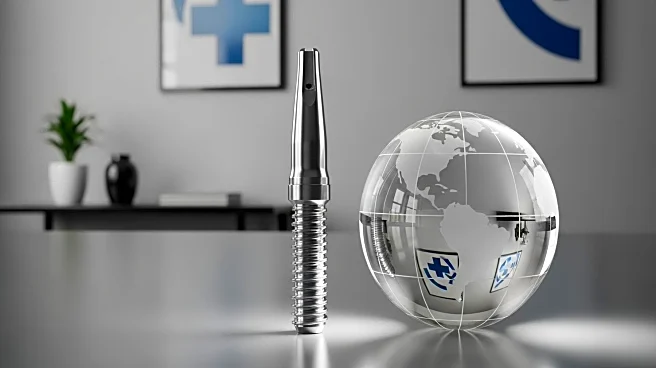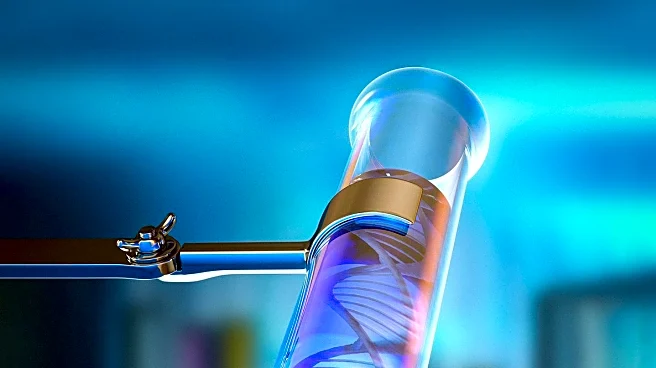What's Happening?
Johnson & Johnson has announced plans to spin off its orthopedics business into a standalone company named DePuy Synthes within the next 18 to 24 months. This decision marks the company's second major spin-off since 2023, following the separation of its consumer unit into Kenvue. The orthopedics unit, which generated approximately $9.2 billion last year, accounts for about 10% of J&J's total revenue. The company has also raised its 2025 sales forecast, expecting product revenue between $93.5 billion and $93.9 billion, surpassing analysts' expectations. J&J aims to focus on high-growth, high-margin areas such as oncology, immunology, neuroscience, surgery, vision care, and cardiovascular. Chief Financial Officer Joe Wolk stated that the company is exploring multiple paths for the separation, with a primary focus on a tax-free spin-off.
Why It's Important?
The spin-off of J&J's orthopedics business is significant as it reflects the company's strategic shift towards focusing on high-growth sectors. By separating the orthopedics unit, J&J aims to streamline its operations and concentrate resources on areas with higher potential for innovation and profitability. This move could potentially enhance shareholder value and improve the company's competitive position in the healthcare industry. The raised sales forecast indicates strong performance and confidence in future growth, which may positively impact investor sentiment and stock prices. The decision to spin off the orthopedics business also suggests that J&J sees greater opportunities for innovation outside its current scope, potentially benefiting the orthopedics sector with more specialized focus and investment.
What's Next?
J&J plans to execute the spin-off of its orthopedics business within the next 18 to 24 months, with a primary focus on achieving a tax-free separation. The company will continue to explore various options for the spin-off, which may include partnerships or other strategic arrangements. As J&J shifts its focus to high-growth areas, stakeholders can expect increased investment and development in sectors like oncology and immunology. The separation may lead to changes in market dynamics within the orthopedics industry, as DePuy Synthes becomes an independent entity. Investors and analysts will likely monitor J&J's progress in executing the spin-off and its impact on the company's overall performance.
Beyond the Headlines
The decision to spin off the orthopedics business raises questions about the future of innovation in the sector. As J&J moves away from orthopedics, the standalone company DePuy Synthes may have the opportunity to pursue new technologies and partnerships that were previously beyond J&J's scope. This could lead to advancements in orthopedic treatments and devices, potentially benefiting patients and healthcare providers. Additionally, the spin-off may influence other healthcare companies to reevaluate their business strategies and consider similar separations to focus on high-margin areas.












